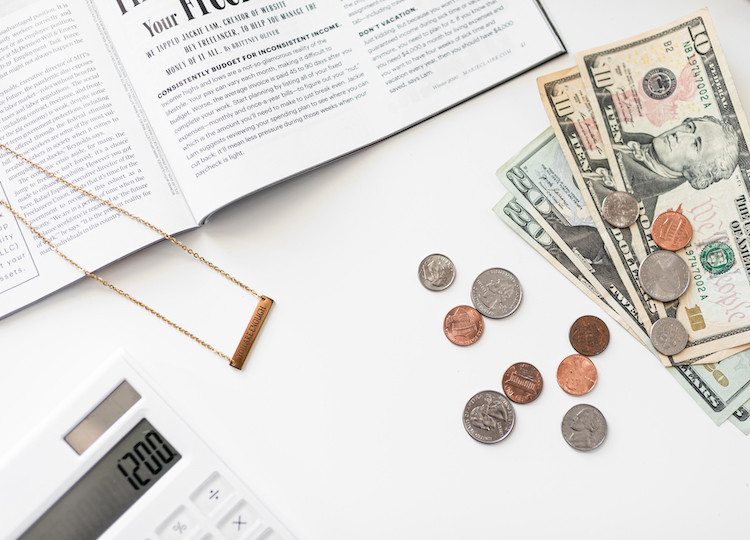
I have seen study after study back up the importance of talking to kids about money. It’s not all that surprising that when parents teach their kids about budgeting, saving, and other good money habits when they’re young, they carry those important lessons into their adult life.
Something that did surprise me though was that teaching kids how to be financially responsible can impact more than just their financial lives. A recent study from BYU found that children who learn proper money management behavior from their parents have more fulfilling relationships with their significant others in young adulthood.
My husband and I never fight about money, but who knew I had mom and dad to thank for that?
While my parents taught me numerous financial lessons as a child that have served me well in adulthood, in honor of Mother’s Day being just around the corner, I want to share the best money hack my mother ever taught me.
The Hack: Skip the $3 Purchase
A young child is only capable of understanding so much about how finances work. One really helpful lesson my mom started me off with young ended up sticking with me my whole life. She taught me—and repeatedly reminded me for more than a decade—that you always resist the temptation to make a $3 purchase. Of course, she didn’t mean to put back an essential grocery or personal care item on the shelf if it only cost a few dollars. What she meant was to ignore the very small spending temptations that lurk around every corner.
My mom explained to me that when a purchase is such a small amount that it won’t impact your budget, it’s easy to add it to your cart without thinking. That’s why retailers put candy, travel-sized beauty products, and other fun and inexpensive finds at the checkout. They know you’ll only have a few seconds to make a decision and the low price should, in theory, make it a no-brainer.
Those tiny purchases were a big “no no” in my house and not in the “millennials should stop buying avocado toast” kind of way. Here’s what this hack really means at its core.
You Realize Small Purchases Add Up Fast
Spending a few dollars may not seem that impactful at the moment, but $2 here and $5 there can really start to add up. I learned this lesson the hard way as a freshman in high school. My high school was across the street from a shopping center with restaurants and shops. With our newfound independence, all the teens were quite eager to hang out there after school. One smoothie turned into two. Add in a candy bar here and there and a Starbucks Frappuccino, and one day, I opened my wallet to realize there was no cash left. My birthday and babysitting money was gone, but I hadn’t made any major purchases. That’s when it hit me: My mom was right. The $3 purchases add up before you even realize what hit you.

Source: Color Joy Stock
You Learn to Embrace Mindfulness
Not only do these purchases add up quicker than one would think, but the problem is also that you don’t actually think about them all that much.
You don’t give a $3 purchase the same credence you would a $50 one. Instead of putting it in your online shopping cart and walking away and only coming back to the purchase later if you really want it, small purchases are often made without really considering if they will add value to our lives. The $3 purchase is a recipe for overspending and increasing clutter in your home.
My mom’s hack taught me how to be more mindful when I’m shopping. While this lesson started in a small way, today, I practice mindfulness on any purchase I make, big or small. Like anyone else, emotional spending is a temptation for me. Whenever I’m tempted to buy a pick-me-up or to celebrate by spending money, I ask myself if I really want or need the purchase or if those feelings will pass.
You Build Good Financial Habits
That missing cash from my wallet was a good lesson in high school and was a turning point in how I view money. I learned then that I never wanted to feel my money slip through my fingers again. Looking back, it was also one of the first steps I took toward building good financial habits (and maybe my career as a finance writer!).
Resisting those small spending temptations may look deprivational at first glance, but it plays into a much bigger picture. Budgeting, saving, and meeting financial goals—such as buying a home or paying for a child to go to college—all require being aware of what we’re spending and not “wasting” money.
I used quotation marks because not every $3 purchase is a waste. You can buy that latte when you’re having a really bad day or can pick up a fun lip color that will make your next Zoom call feel more festive. It’s more about breaking the habit of discounting how impactful small purchases can be and making the most of the money you work really hard for.
Thanks to inflation, I’ll probably have to teach my future children the $6 rule one day, because this is a lesson from my mom that I hope to pass on.
